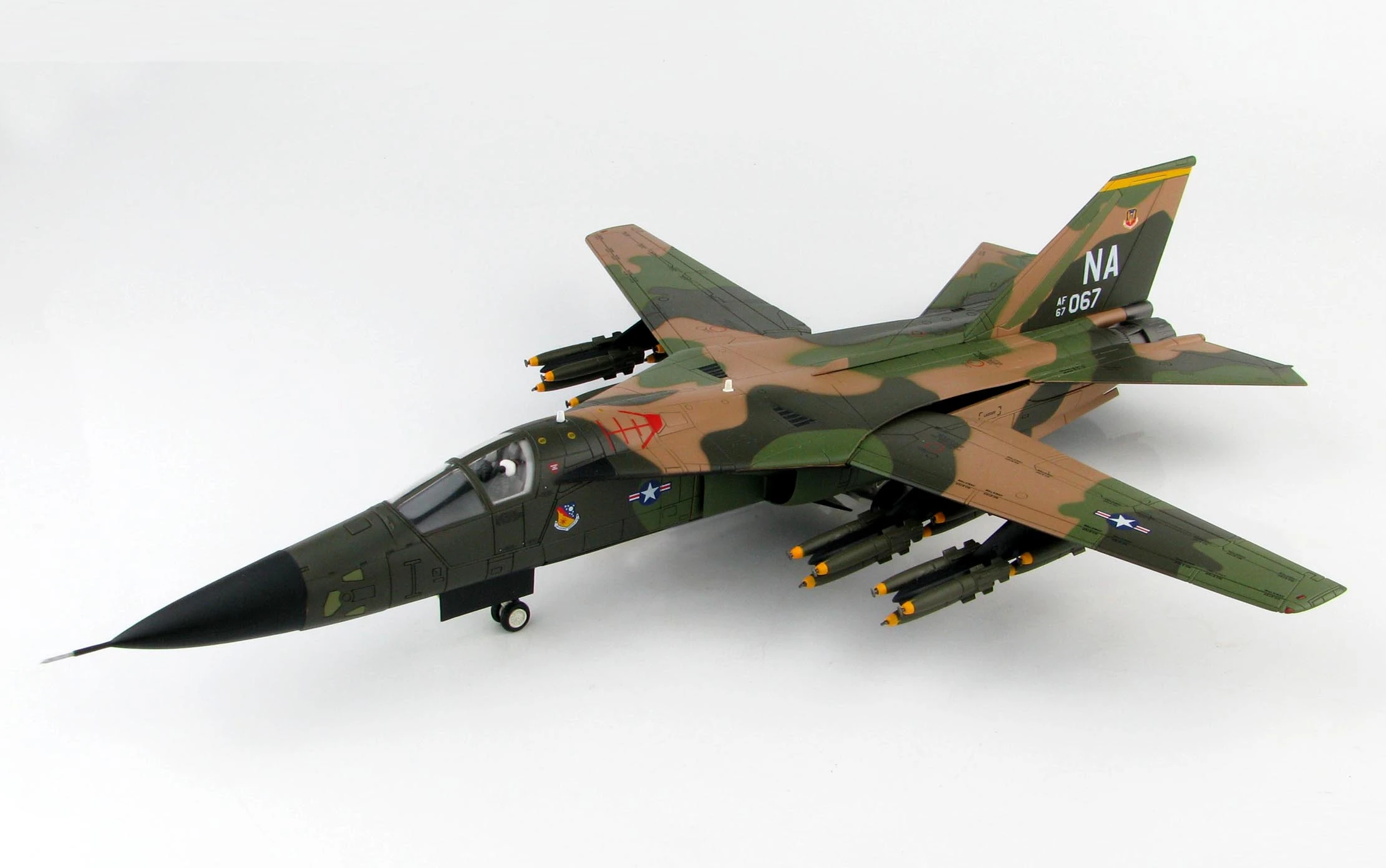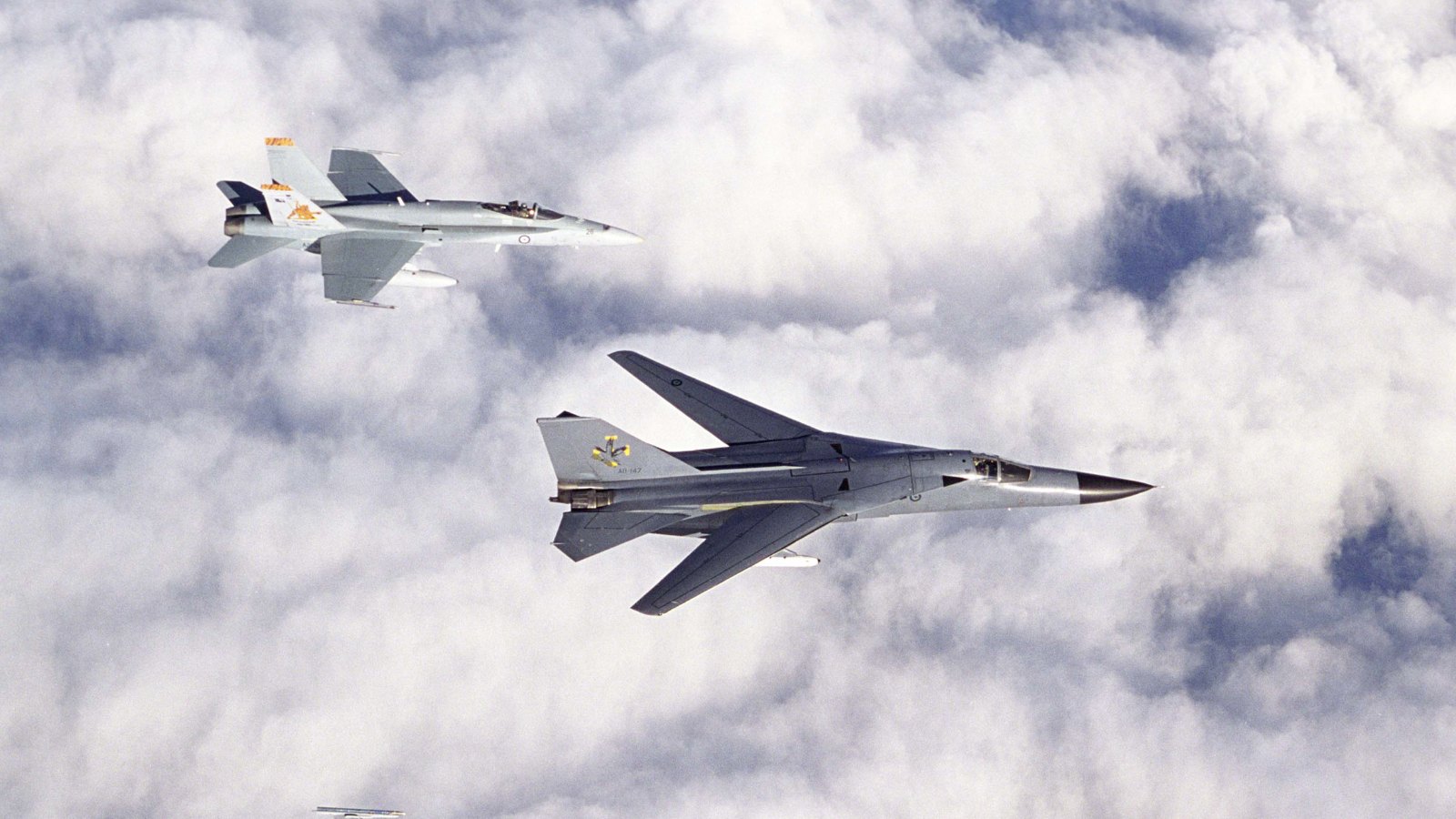F111 In Vietnam - Homepage Cold War Era Aardvark Down: A former WSO F-111 tells the story of its takedown over North Vietnam during Operation Linebacker II.
Aardvark Down: An ex-F-111 WSO tells the story of his escape to North Vietnam during Operation Linebacker II.
F111 In Vietnam

"If I believed in superstitions at all, I probably wouldn't have flown this mission at all. Each of the lost F-111s had a call sign ending in 3, and all died on Monday night. December 22nd was a Monday and our call sign was Jackal 33." - Bill Wilson, ex-F-111 WSO.
F111 Aardvark Stock Photos
When Bill Wilson was captured by the North Vietnamese, one of the captors pointed an accusing finger at him, saying, "YOU! F-One Eleven!" and, waving his hand down, "UUUUUUUUU!" It was an understatement to describe the fear and dread that the North Vietnamese felt for the bombers who came unannounced at night to sow the seeds of destruction with precision. When Wilson collected his Golden BB, he flew the F-111 for over a year.
Originally known as the TFX (Tactical Fighter "X"), the F-111 was designed to meet the USAF's need for a new fighter-bomber. In 1960, the Department of Defense combined the U.S. demand for The US Air Force F-111A first flew in December 1964, and the first production models were delivered to the US Air Force in 1967. Meanwhile, the Navy's F-111B program was suspended. A total of 566 F-111s of the entire series were built; 159 of them were F-111As. Although the F-111 was unofficially called the Aardvark, it did not officially receive this designation until it was retired from service in 1996.
An interesting feature of the plane was the wings with a different geometry. In the air, the wings could tilt forward for takeoff, landing, or low flight, and back for high flight. The F-111 can also fly very low and hold a level in bad weather.
This print is available in several formats at AircraftProfilePrints.com. CLICK HERE TO GET YOURS. F-111F Aardvark, 48th Tactical Fighter Wing, 495th Tactical Fighter Squadron, LN/70-2391, RAF Lakenheath, UK, 1991.
Legering Vliegtuigen Us Air Force F 111a F111 Aardvark Fighter Bomber Vietnam Oorlog Thuis Display Collection Toy Gift Gratis Verzending|diecast & Speelgoed Auto´s|
In the spring of 1968, the US Air Force conducted combat tests of the F-111A in Southeast Asia with mixed success. In 1972, after solving the initial problems, the USAF returned the F-111A to Southeast Asia for Operation Linebacker II, as recalled by former F-111A Weapons System Officer (WSO) Bill Wilson in Lou Drendel's book F-111 in Action. "My last job was very memorable, although the memories are far from happy. This was our second Linebacker II mission. Our first mission was the attack on the Hoalak airport on the night of December 18. After this mission, we had a four-day holiday so that the workers could equally distribute the work among all the workers. During this break, I made the mistake of asking the duty officer to go "downtown." We had never been to any target near Hanoi, and both Bob [Wilson's pilot, Captain Robert Sponybarger] wanted to know about the place. We were confident in the F-111 and our approach, and I think we were determined to prove that we could take the most formidable air defense system ever built and survive. This was not the first dangerous job I had volunteered for, but I later assured myself that it would be my last.
"We were told to go to the river ports right in the middle of Hanoi. Now "town" was a euphemism used to describe the magic ten-mile radius of the most protective spirit surrounding Hanoi. I did not expect to be sent directly in the middle of it!
"We took off from Takhli at 21:00, climbed to an area in the middle and continued through the Plain des Jars area in Laos to the Gorilla Head area in North Vietnam, where we began our descent to the summit.

"It was December 22, you were a warrior. The enemy was not as weakened as the following week, and air defense calculations were at their best. We've been hitting all over Hanoi and, of course, the rivers have been hit before. Most of the blows came from the southeast, as this gave the workers a direct route out of the area and reduced their strength on defense. We expected them to keep a close eye on these southeast routes, so we planned our approach to the objective from the north. After settling into TFR mode, we crossed into North Vietnam at an altitude of 500 feet. The closer we got to Hanoi, the more we stuck to the area. Our last leg before turning south was on the north side of Thad Ridge, giving us complete concealment from air defense radar. When we turned and headed south, the weather troubled us. We were 300 meters up, high up with a full moon peeking through the gaps in the clouds. Bad weather for the F-111. Visibility under the clouds was not allowed and we could see the lights of Hanoi in the distance. We took the last course of Duc Noi, about ten miles north of our hope. By this time we were cruising at about 480 knots, and my view of the world outside the plane was fragmentary, as it should have been, since I spent most of my time on the radar. I remember they never turned off the lights. They included the Paul Doomer bridge superstructure, which we used to set up our radar in the last phase of the attack. We started anti-aircraft fire, mostly 37-57mm, five miles before we reached the target. They were the usual objects that appeared in sections of five red and orange golf balls, and although there were many, they were all behind us as they didn't see us on the radar and all were focused on our sound. . I remember at that time I felt a little depressed. as I expected a strong resistance. We saw great things. . . 85 and 100mm. . . on a previous mission to Thai Nguyen. We learned later that the enemy had stopped firing their big guns at low effort, high speed because the high speed required was throwing the anti-aircraft soldiers and wounding them, and they still had no hope of hitting us. [As Drendel explains, most of the people killed by the North Vietnamese who claimed to be the result of American bombings were self-inflicted with low-altitude high-altitude bombs and shrapnel scattered across the countryside.]
General Dynamics F 111 · The Encyclopedia Of Aircraft David C. Eyre
1st Lt. William Wilson, an F-111A fighter pilot with the 429th Tactical Fighter Squadron, was flying over North Vietnam when his plane was shot down during the Minebacker II mission. After a week of evasion, Wilson was caught. Wilson and the pilot, Captain Robert Sponybarger, were released at the end of the war.
"But, although they didn't reach us with their AAAA, they traced our path in the sky successfully. They made small-arms firing lines . . . straight up . . . this way, hoping to get lucky. Two nights before our mission, one of the planes came back and hit the back of the pipe. exhaust. The plane came back last night with a hit on the stabilizer. They seemed to have mastered the new approach. And if I were superstitious at all, I probably wouldn't have flown this mission at all. Each of the lost F-111s had a call sign ending in 3, and they all died on Monday night. December 22 it was monday and our call sign was jackal 33.
"Our weapons destroyed twelve 500-pound Snakeyes as we roared past the ships at over 550 mph. Thanks to the sophisticated F-111 system and the good radar offset we got from the Doomer Bridge, there wasn't much doubt that we would hit the target, and we could see the docks exploding as we rolled off when it was aimed at the target. the turn of our first leg back to base. As soon as we looked back in the cab, we saw that the hydraulic system failure indicator was there. We didn't think about it at the time. . . we didn't hear a crash in the plane, and we got one of the lights on the previous mission. It was a mild annoyance more than anything else. But less than a minute later we received a fire warning on the right engine.
Women in vietnam, clothing manufacturers in vietnam, foreign business in vietnam, health insurance in vietnam, recruitment in vietnam, manufacturing in vietnam, volunteer in vietnam, textile manufacturers in vietnam, foreign company in vietnam, dating in vietnam, medical insurance in vietnam, f111 in sap

0 Comments